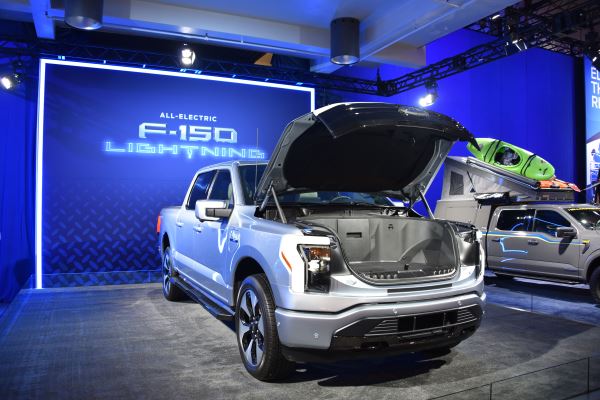 This article originally featured in the June 2022 issue.
This article originally featured in the June 2022 issue.
While others jostled for a glimpse at the Ford F150 Lightning at SEMA last year, I must admit I wasn’t nearly as excited at the unveiling of the all-electric pickup truck. Attendees were packed shoulder to shoulder in the Ford booth to get a look at the “truck of the future” that was on display, but I just didn’t get it.
Not only did I not get it, but if I’m being honest the thought of electric pickup trucks ruling our future highways made me a little nauseous. Don’t get me wrong, I’m not opposed to electric cars, I just don’t believe this technology could ever take the place of my diesel truck or come anywhere close to meeting my demands. To be fair, I don’t embrace change very well so maybe it’s just me. When it comes to advances in technology I’m as plugged in as an Amish toaster and maybe I’m just so set in my ways that I’m not capable of appreciating the evolution of an electric truck. Or maybe I’m just right.
Before you load up my email inbox and attempt to cram highway fuel efficiency numbers down my throat, let me go on record by admitting I completely understand the benefits of electric vehicles. However, I just don’t see electric trucks ever being a realistic replacement for my one-ton diesel. I admit the 426 horsepower and 775 pounds-feet of torque for the F150 Lightning surprised me a little; those are actually quite impressive numbers for a half-ton with a towing capacity of 7,700 pounds. While I’ve never personally owned a half-ton truck, I’ve never considered them as a realistic option for anyone who regularly tows campers, larger boats or fully enclosed trailers.
However, it seems our country is really excited about electric trucks, or maybe they just subscribe to the theory that new is better when in some cases new is just…different. Of course it doesn’t help my cause that a ban on the sale of gas and diesel vehicles will be implemented in California in 2035. I’m predicting this will just make the diesel truck dealerships in Oregon, Nevada and Arizona extremely popular.
Another big blow to light-duty diesels was when Ford announced last summer it was dropping its 3.0-liter V6 diesel option for its wildly popular F150 pickups. The decision was made to switch the 2022 F150’s efficiency spotlight to the truck’s hybrid and all-electric versions.
Now granted, Ford only dropped its diesel option for its F150 trucks and the heavy-duty F-Series Super Duty continues to offer a turbo-diesel 6.7-liter V8 that puts out 475 horsepower and 1,050 pounds-feet of torque with a towing capacity of 22,800 pounds.
Luckily the RAM 1500 regular-duty pickup still has the option of the EcoDiesel V6 and the Chevrolet Silverado 1500 and Sierra 1500 regular-duty pickups still offer GM’s Duramax turbo-diesel 3.0-liter inline-six, but again, these are the smaller half-ton trucks.
The 6.7L turbo-diesel for the RAM 3500 pickup truck produces 420hp and 1,075 pound-feet of torque with a maximum towing capacity of up to 20,000 pounds. The 6.6L turbo-diesel V8 produces 445hp and 910 pound-feet of torque and can tow up to 18,500 pounds. So what’s the real difference? These are all stock numbers and there is a reason owners modify their diesel engines for torque and horsepower gains. Just one of the many advantages to owning a diesel truck is the potential to legally and drastically improve your truck’s performance to meet your needs. The same can’t be said for the electric F150 pickup.
Chase the storm if you want, but I don’t see the Ford Lightning or any other electric truck competing with full-size diesel trucks anytime soon.